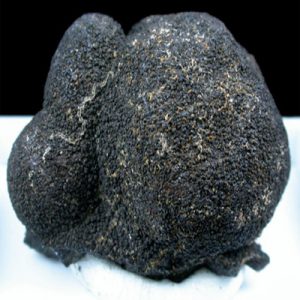Buserite
Buserite is a rare hydrous manganese oxide mineral. It is an unusual mineral in that it must be kept wet. If allowed to become dry it dehydrates to the mineral Birnessite; therefore it needs to be stored in water. Buserite can be found as smooth dark brown spherical nodules. One source is a flooded area of the Oppu Mine, Aomori, Honshu Island, Japan. Buserite has been found in stream beds, hot spring deposits and in rhodochrosite mine wastewater; also as deep sea manganese nodules. Buserite was first described by R. Giovanoli, E. Stahli, and W. Feitnecht in 1970 from specimens found at the Yuno-Taki waterfall, Me-akan volcano, Akan National Park, Kushiro Province, Hokkaido Island, Japan. Buserite was named after the Bernese chemist Prof. Dr. W. Buser who had identified the phase in a manganese nodule. The name is commonly used by geologists when referring to deep-sea manganese nodules.
Locations for Buserite: the type locality at the Yuno-Taki waterfall, Me-akan volcano, Akan National Park, Kushiro Province, Hokkaido Island, Japan. Also in Japan at the Oppu Mine, Aomori, Honshu Island. In Austria at the Bürgergilde marble quarries, Olsa, Friesach – Hüttenberg area, Carinthia. In Korea at the Janggun and Dongnam Mines. In Moldova at the Emil Racovita Cave (Zoluska Cave), Criva, Edinet. In the Ukraine on the Kerch Peninsula, Crimea Peninsula, Crimea Oblast’. In the USA at Pinal Creek, Globe Placers, Globe Hills District, Globe-Miami District, Gila County, Arizona.
| Chemical Formula: | Na4Mn14O2 • 21(H2O) |
| Hydrated Sodium Manganese Oxide |


